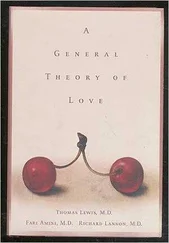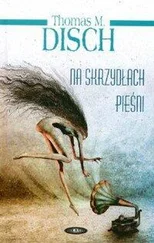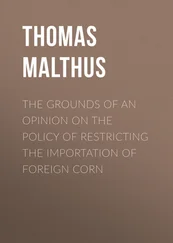Greta laughed too, for Clay had begun to tickle her toes. “You’re all wet, all of you,” she said, still giggling but trying to stop. “I still say that Kim Novak is the greatest actress who ever lived.” She had been saying it and saying it for fifteen minutes, and it seemed now that she would say it again.
Buddy was mortally bored. He had thought it would be better to stay behind with the younger set than to go along on another of his father’s tedious, purposeless explorations through the labyrinthine roots of the Plants. Now that the supplies had been gathered in, now that they had learned everything about the Plant that there was to learn, there was no point in wandering about. And no point in sitting still. He had not realized till now, till there was nothing to do, what a slave to work and Puritan busyness he had become.
He rose, and his hair (cut short now, like everyone else’s) brushed against the clinging fruit. The fruit pulp, when it dried and matted in one’s hair, was more aggravating than a mosquito bite that couldn’t be itched.
“Where are you going?” Greta asked, offended that her audience should desert her in the middle of hen analysis of Kim Novak’s peculiar charm.
“I’ve got to throw up,” Buddy said. “See you all later.”
It was a plausible enough excuse. The fruit, though it nourished them, had minor side effects. They were all, a month later (such was the estimate on which they had agreed), still suffering from diarrhea, gas pains and bellyaches. Buddy almost might have wished he did have to vomit: it would have been something to do.
Worse than the stomach upsets had been the colds. Nearly everyone had suffered from these too, and there had been no remedy but patience, sleep and a will to recover. In most cases these remedies were sufficient, but three cases of pneumonia had developed, Denny Stromberg among them. Alice Nemerov did what she could do, but as she was the first to confess, she could do nothing.
Buddy climbed up the rope from the tuber into the root proper. Here he had to walk crouched, for the hollow space in the root was only four and a half feet in diameter. Bit by bit over the last month, the party had moved down many hundreds of feet—to a depth, Orville had estimated, of at least 1,200 feet. Why, the Alworth Building wasn’t that high. Not even the Foshay Tower in Minneapolis! At this depth the temperature was a relaxed seventy degrees.
There was a rustling sound close ahead. “Who’s that?” Buddy and Maryann asked, almost in unison.
“What are you doing here?” Buddy asked his wife in a surly tone.
“Making more rope—but don’t ask me why. It’s just something to do. It keeps me busy. I’ve shredded up some of the vines, and now I’m putting them back together.” She laughed weakly. “The vines were probably stronger than my ropes.”
“Here, take my hands—show them how to do it.”
“You!” When Buddy’s hands touched hers, she continued busily knitting so that her fingers would not tremble. “Why would you want to do that?”
“As you say—it’s something to do.”
She began to guide his clumsy fingers but grew confused frying to keep in mind that his right hand was in her left and vice versa. “Maybe if I sat behind you…” she suggested. But as it turned out, she couldn’t even close her arms around his chest. Her belly was in the way.
“How is he?” Buddy asked. “Will it be much longer?”
“He’s fine. It should be any day now.”
It worked out as she had hoped: Buddy sat behind her, his thighs clenched about her spread legs, his hairy arms beneath hers, supporting them like the armrests of a chair. “So teach me,” he said.
He was a slow learner, not used to this kind of work, but his slowness only made him a more interesting pupil. They wore away an hour or more before he was ready to start his own rope. When he had finished it, the fibers fell apart like shreds of tobacco sliding out of a beginner’s cigarette.
From deep inside the tuber came the music of Greta’s laugh, and then Clay’s bass-drum accompaniment. Buddy had no desire to rejoin them. He had no desire to go anywhere except back to the surface, its fresh air, its radiance, its changing seasons.
Maryann apparently was having similar thoughts. “Do you suppose it’s Ground Hog’s Day yet?”
“Oh, I’d say another week. Even if we were up there where we could see whether or not the sun was out, I doubt there’d be any groundhogs left to go looking for their shadows.”
“Then Blossom’s birthday could be today. We should remind her.”
“How old is she now? Thirteen?”
“You’d better not let her hear that. She’s fourteen and very emphatic about it.”
Another sound came out of the fruit: a woman’s anguished cry. Then a silence, without echoes. Buddy left Maryann on the instant to find out what had caused it. He returned shortly. “It’s Mae Stromberg. Her Denny’s dead. Alice Nemerov’s taking care of her now.”
“Pneumonia?”
“That, and he hasn’t been able to hold any food.”
“Ah, the poor thing.”
The Plant was very efficient. In fact, as plants go, it couldn’t be beat. It had already proved that. The more you learned about it, the more you had to admire it. If you were the sort to admire such things.
Consider its roots, for instance. They were hollow. The roots of comparable, Earth-evolved plants (a redwood is roughly comparable) are solid and woody throughout. But what for? The bulk of such roots is functionless; in effect, it is so much dead matter. A root’s only job is to transport water and minerals up to the leaves and, when they’ve been synthesized into food, to carry them back down again. To accomplish this, a root must hold itself rigid enough to withstand the constant pressure of the soil and rock around it. All these things the Plant did excellently well—better, considering its dimensions, than the most efficient of Earth’s own plants.
The greater open space within the root allowed the passage of more water, more quickly and farther. The tracheids and vessels that conduct water up through an ordinary root do not have a tenth of the capacity of the expansible capillaries that were the cobwebs of the Plant. Similarly, the vines lining the hollow roots could in a single day transport tons of liquid glucose and other materials from the leaves down to the tubers of fruit and the still-growing roots at the lowest levels. These were to the phloem of ordinary plants as an intercontinental pipeline is to a garden hose. The hollow space within the root served a further purpose: it supplied the nethermost regions of the Plant with air. These roots, stretching so far below the airy topsoil, did not have, as other roots would, an independent supply of oxygen. It had to be brought to them. Thus, from the tips of its leaves to the farthest rootcaps, the Plant breathed . It was this multifarious capacity for rapid and large-scale transportation that had accounted for the Plant’s inordinate rate of growth.
The Plant was economical; it wasted nothing. As its roots sank deeper and thickened, the Plant digested even itself, forming thereby the hollow in which the complex network of capillaries and vines then took shape. The wood that was no longer needed to maintain a rigid exoskeleton was broken down into useful food.
But the fundamental economy of the Plant, its final excellence, consisted in none of these partial features, but rather in the fact that all Plants were one Plant. As certain insects have, by social organization, achieved that which to their individual members would have been impossible, so the separate Plants, by forming a single, indivisible whole, had heightened their effective power exponentially. Materials that were not available to one might be available to another in superfluity. Water, minerals, air, food—all were shared in the spirit of true communism: from each according to his ability, to each according to his need. The resources of an entire continent were at its disposal; it did not want for much.
Читать дальше












